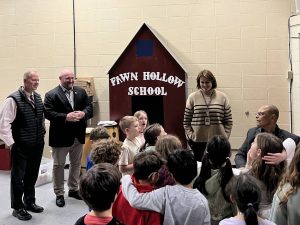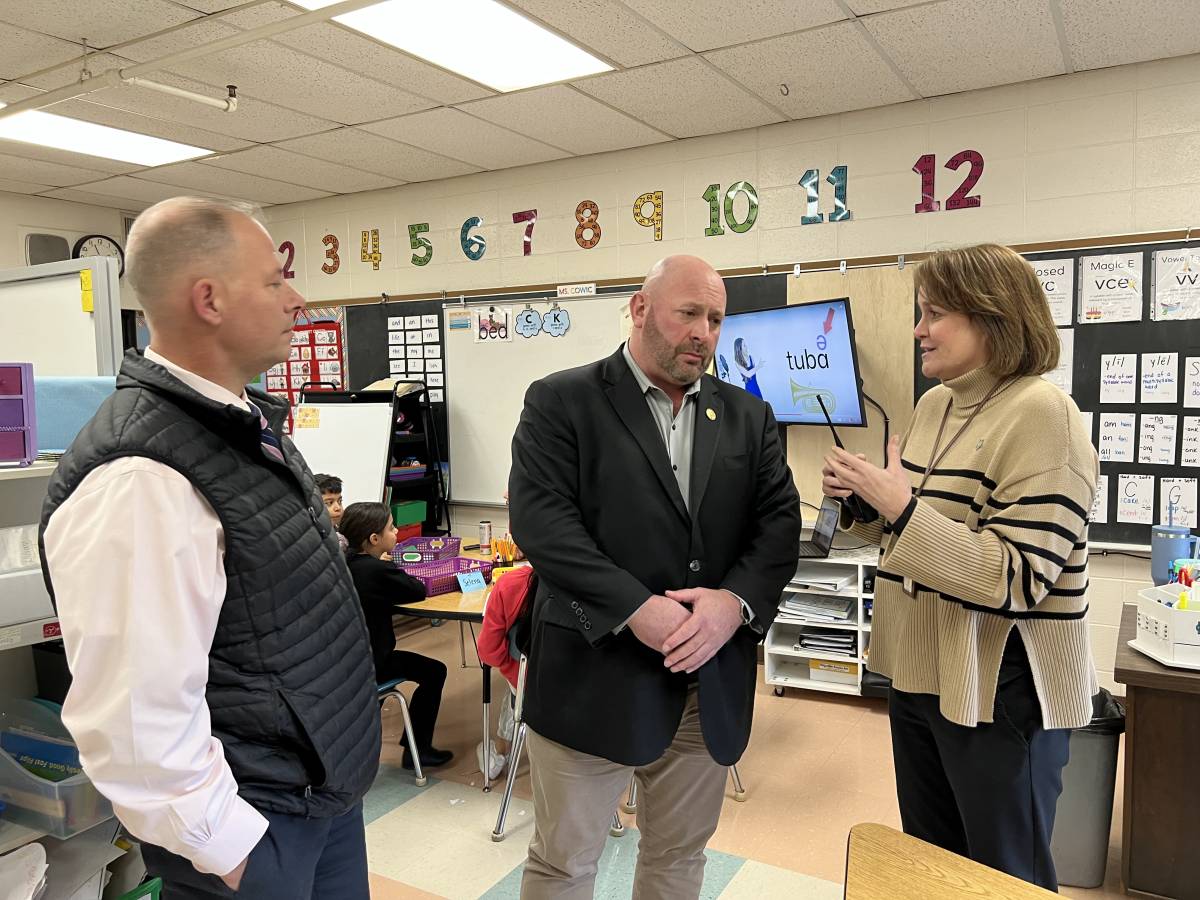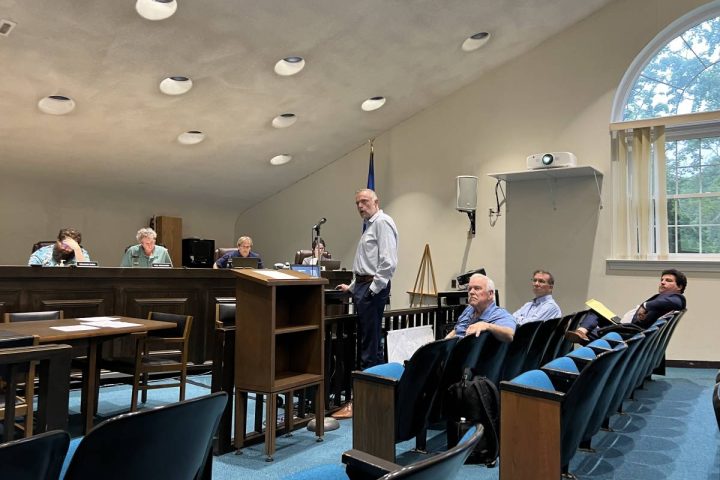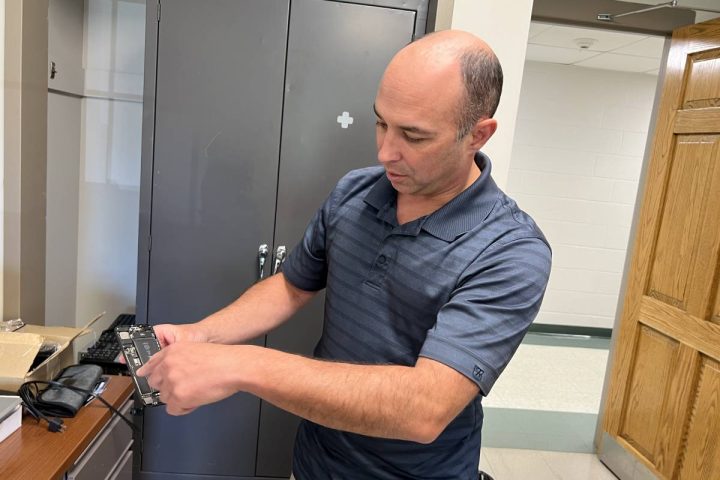MONROE, CT — First Selectman Terry Rooney and Superintendent Joseph Kobza toured Fawn Hollow Elementary School with Principal Leigh Metcalf Ances Friday afternoon to assess the school’s space needs amid the budget process.
The Board of Education recently approved a $72.5 million budget for Monroe’s five public schools, a request with a 7.15 percent spending increase for fiscal year 2024-25. The budget is now on the first selectman’s desk.
“It’s a significant increase and it is my responsibility to be fiscally responsible to the taxpayers and the town — and to understand the needs that are being created by growth in Monroe,” Rooney said.
Student population increases have had the biggest impact on Fawn Hollow, so the first selectman visited the school to have a better understanding of how educators are using space in their building. Rooney said he also wanted to see the justification for the Facilities Study first hand.
“We’re at full capacity,” Ances said.
She led Rooney and Kobza to the All-Purpose room, which was bustling with activity. A door to a back room led to a space where Alejandro Jiminez, a part-time music teacher, taught a lesson to second-graders, who sat in a circle on the floor.
Jiminez stood up, walked to his piano and asked his students to gather around him to perform their Martin Luther King song for their principal.
“Freedom, let it ring for Dr. King. Let us sing in harmony, peace and love for you and me,” the children sang while their teacher played the piano.

Ances smiled and clapped enthusiastically when they were finished. “What a good message,” she said.
Ances said Scientific Research Based Intervention (SRBI) has increased instruction that is one-on-one and with smaller groups, creating the need for more smaller spaces.
She took Rooney and Kobza into a classroom where three certified teachers worked quietly with children one-on-one. On the other side of the room, a teacher helped children seated around a table with their spelling. Just a few feet away, another teacher used a screen to lead a boy through a math problem.
“We’re sharing our space, so we have multiple teachers in the same classroom doing their thing at the same time, so it can pose a challenge,” Ances said.
“Is there a way to make isolated spaces in the rooms for multiple teachers?” Rooney asked, while walking down the hallway.
Aside from some room dividers, Ances said staff places shelves, white boards and other furniture in ways to create separate spaces.

Rooney said he was talking about partitions for work stations, possibly with drywall, adding he did not know what would be allowed, but wanted to share ideas to start a discussion.
Kobza and Ances said they would have to talk to Fire Marshal William “Bill” Davin about it.
Rooney suggested the possibility of using sheetrock with some soundproofing to make three small rooms out of a larger one.
“It’s not a solution to all your problems, just some thoughts of things you can do or say it doesn’t work,” he said.
A physical education classroom was being used simultaneously for two first grade gym classes, one taught by Jenna Rice and another by Pam Pascarella.
Near the end of the tour, Ances showed Rooney Classroom 20-A and 20-B, which is divided by a partition. It used to be a teacher workroom with copier machines and other equipment, before being used for classes.
“How’s that for a sound barrier?” Rooney asked.
“It’s not great, but it dulls it,” Ances said.
While high school students can be moved to different periods to manage classroom sizes, Kobza said elementary schools do not have that same flexibility. When the student population grows enough, a new classroom is needed.
Outside Fawn Hollow, he and Ances showed Rooney where portable classrooms will go if needed, in back of the building where the playings fields are.
All respectful comments with the commenter’s first and last name are welcome.









Yup – go for it – raise the taxes – get some more seniors to sell to buyers with school age children – make the schools even more crowded – raise the taxes again – that’ll work